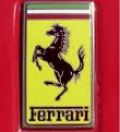History of Logo Design
Cars are the universal status symbol and just as many car manufacturers have interesting histories behind their names, many company logo’s quite often have unusual stories too. Sometimes it may be the town of manufacture or a previous incarnation that inspires the design, on other occasions it’s the strange viewpoint on the world taken by a particular designer that creates an iconic image.
Alfa Romeo
Made in Milan and use the city’s coat of arms, which feature a red cross on a white field and a serpent eating a man and evolved during the crusades.
Abarth
The Italian car manufacturer, who in 1971 were incorporated into Fiat. The founder Carlo Abarth was born on the 15th November 1908, which made his astrological, sign scorpio. Hence the badge, it also incorporates the colours of the Italian flag and the red and yellow of the racing world.
Audi
Comprises four interlinked rings which represent the four companies that in 1932 combined to form the Audi name. Audi, DKW, Horch and Wanderer
Bentley
The British manufacturer started out building aircraft engines during World War One and so naturally used stylised wings as part of its logo.
BMW
The Bavarian company uses the colours of the Bavarian flag and its circle with a cross comes from the fact that the early company manufactured engines for aeroplanes during the Second World War and the logo is representative of a propeller.
Buick
Their logo is made up of three shields that area meant to represent the three initial marques that Buick originally manufactured. The Le Sabre, Invicta and the Electra.
Cadillac
The company was named after a famous French explorer who discovered Detroit, the logo is based around Antoine Laumet de la Mothe, Sieur de Cadillac’s coat of arms.
Chevrolet
The famous Chevy bowtie has two conflicting stories attached to it, founder William C. Durant maintained it came from a wallpaper design in a French hotel he once stayed, while his wife said that he saw it in a newspaper whilst on holiday in Virginia in 1912.
Citroen
The inverted chevrons on the Citroen logo were from an earlier company that founder Andre Citroen ran that manufactured gears for engines. The double << were meant to represent the interlocking teeth of gear cogs.
Ferrari
The Italian World War One flying ace, Count Francesco Baracca, first used the internationally renowned prancing horse on the side of his aircraft and was symbolic of the Calvary Regiment with whom he. In 1923 the Counts mother persuaded Enzo Ferrari to use it on his racing cars for luck. The yellow background on which the horse dances is representative of the town of Modena where Ferrari grew up.
Maserati
The Maserati logo is another marque that takes its design from the town of its manufacture, Bologna, Italy. The trident is part of a well-known sculpture in the centre of town.
Mercedes
The tri-star was came from a doodle that Grottlieb Daimler drew on a post card he send his children from Cologne, showing them where he was staying. When the Daimler and Benz companies merged in the 1920’s the wreath from the Benz logo and the Daimler tri-star were joined too.
Peugeot
Again derived from the town where the brand was first manufactured, in Peugeots case it was Belfort. Bartholdi whose other famous icon was the Statue of Liberty conceived the logo.
Pontiac
The original logo used on the Pontiac brand until 1956 was a native American in full headdress meant to represent Chief Pontiac who led an unsuccessful revolt against the British. On later models a stylised arrow was used, harkening back again to the Indian Chief who inspired the company’s name.
Porsche
Porsche were founded in 1931 in Stuttgart and created a logo that closely resembles that of the town.
Renault
The French companies diamond logo came from a design feature on the bonnet of their early cars. A boss that was originally fitted to surrounded the hole through which air escaped when the horn was pressed.
SAAB
The SAAB logo, a mythical birds head is from the coat of arms of the company’s founder Count Von Skane and the Swedish province of Skane where the company was formed.
Vauxhall
The company took its name from the Faulk Le Breant’s family house, a fourteenth century mercenary of employed by King John. Le Breant’s emblem features a griffin and along with Faux Hall, Manor House in Luton, the nearby car company took its name and badge.



















No comments:
Post a Comment